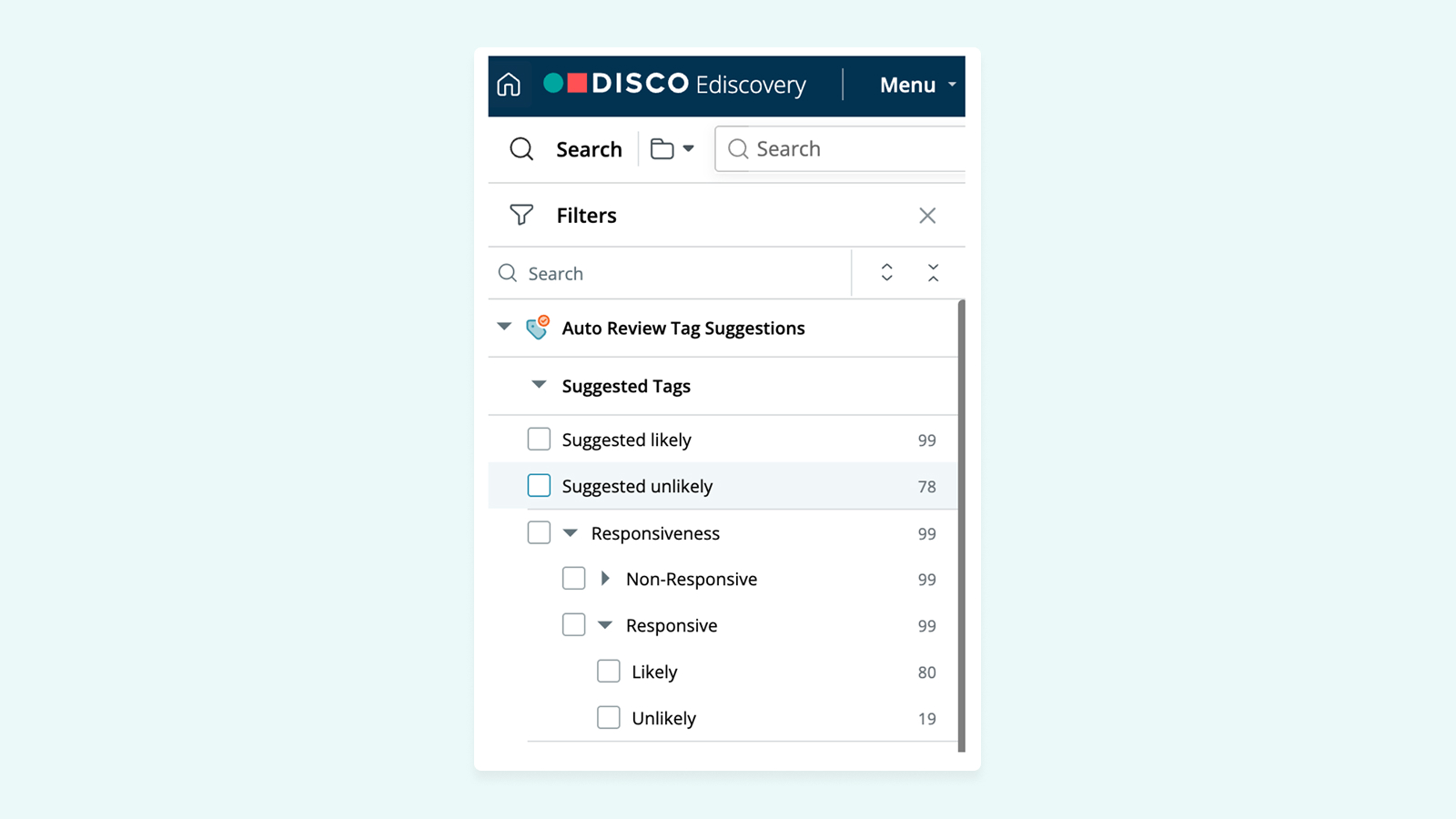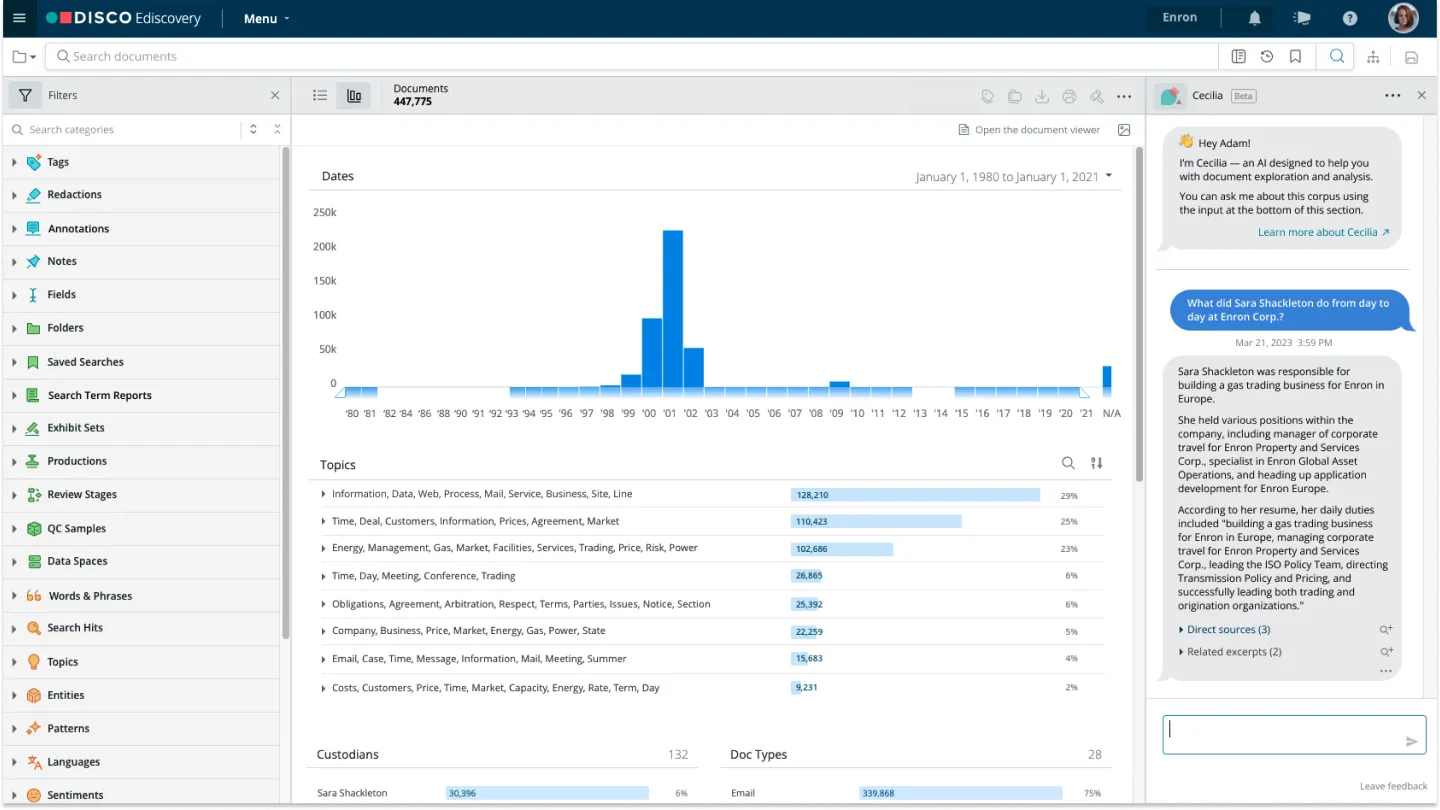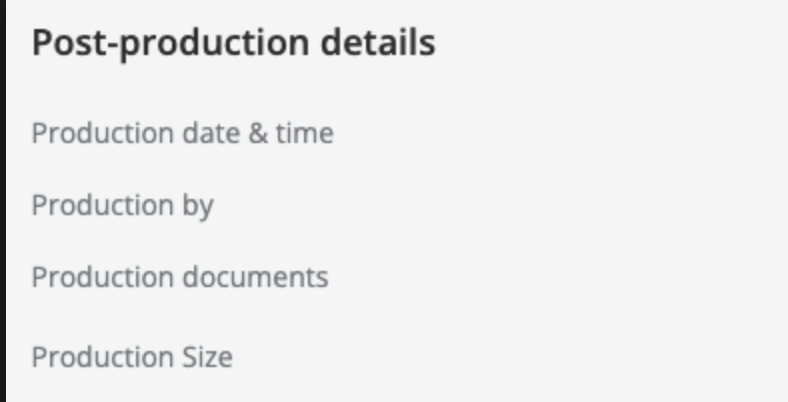⚡️ 1-Minute DISCO Download
Commercial litigation costs continue to rise, but smart legal spend management solutions are helping firms and legal teams bring predictability to these expenses.
📊Key Stat
More than 36% of corporate law departments are bringing more work in-house to contain costs.
🌊Dive Deeper
See “Using AI Tools for Discovery Review” for practical ways to streamline document-heavy work and reduce the most unpredictable expenses in commercial law litigation.
Commercial Litigation Costs: How Legal Teams Can Reduce Their Spend
Commercial litigation costs are escalating. In 2024, Am Law and large boutique firms reported historic growth in demand, with billing rates rising for both partners and associates.
Meanwhile, the ediscovery market is expected to swell from ~$15 billion today to more than $22 billion within five years, driven largely by escalating volumes of discoverable data and more complex case materials.
These trends make cost predictability harder while increasing risk and exposing inefficiencies in how cases are managed. That’s why cost control and technology are no longer “nice to have”: They’re essential tools for any firm or in-house team trying to keep commercial litigation from becoming a runaway expense.
Keep reading to see why the cost of commercial litigation continues to rise — and how legal spend management solutions can help you streamline work and protect the bottom line.
Hidden costs that drive commercial litigation expenses
The true cost of commercial litigation extends beyond line-item legal fees. From unpredictable discovery to last-minute motions and trial preparation, hidden expenses accumulate quickly. Here’s where those costs arise most often and why controlling them is critical:
Discovery
Discovery is often the single largest driver of costly litigation, and one of the hardest to control. What looks manageable at the outset can quickly spiral as new custodians are added, opposing counsel delivers unexpected data dumps, or regulators expand the scope of requests. Each new batch of documents increases review time and the unpredictability of costs.
For law firms and in-house legal teams alike, this unpredictability creates pressure to meet deadlines without racking up write-offs or straining teams with long nights. Limited staff, ballooning data volumes, and reliance on outside vendors can make discovery a runaway cost center.
Without better controls, discovery becomes less about uncovering the facts and more about managing time and spend — a dynamic that can erode client trust and profitability.
Motion practice
Commercial law litigation rarely moves forward without a steady stream of motions, and the work behind them adds up quickly. Drafting, researching, and preparing for hearings demand significant attorney time, especially when multiple rounds of briefing are required. Discovery disputes can generate their own motions, creating additional layers of cost and delay.
These expenses are easy to underestimate in early budgets, yet they directly impact both profitability and client satisfaction.
Mediation
Mediation is often positioned as a cost-saving alternative to trial, but it brings its own set of expenses that may not be factored into the initial budget. Preparing for mediation is strikingly similar to trial prep: reviewing and coding large volumes of documents, creating summaries, and developing persuasive exhibits. If the opposing party produces new data shortly before mediation, those costs can spike even higher as teams scramble to incorporate late-breaking information.
On top of preparation, mediators’ fees, expert witness costs, and the time senior lawyers spend in sessions add to the total bill. When matters don’t settle, much of that investment ends up duplicated as the case moves forward. The result: mediation can double as both a potential cost saver and a hidden cost driver in costly litigation.
Courtroom technology
Trials today are multimedia events. Jurors expect polished presentations, and courts assume evidence will be presented using modern technology, but delivering on those expectations comes at a price. Firms and legal teams may need to hire outside vendors for trial graphics, courtroom technicians, or specialized equipment.
These costs can escalate quickly, especially when changes are needed mid-trial or when multiple parties are involved. Even basic tasks — like preparing demonstratives or converting files for presentation — can generate unplanned costs.
Appeals
Even after a verdict is reached, litigation costs can continue. Appeals can extend a matter for months or even years, adding another round of legal fees, court costs, and substantial attorney time. Teams must re-review trial transcripts, prepare fresh briefs, and often revisit elements of discovery to address appellate issues. Specialized appellate counsel may also be engaged, introducing additional costs that weren’t factored into the original budget.
Each new phase compounds the burden, stretching budgets, consuming billable hours, and prolonging uncertainty. What started as a defined matter can quickly turn into an open-ended source of commercial litigation costs.
How to reduce the cost of commercial litigation
Uncontrolled litigation costs can strain both budgets and client trust. Legal spend management strategies bring more predictability to discovery and trial prep, which helps teams manage expectations and defend expenses with confidence.
Early case assessment
Early case assessment (ECA) gives legal teams a clear view of the scope, risks, and potential costs of a matter before full discovery begins. By analyzing key documents, custodians, and data sources up front, firms can set realistic budgets, develop stronger strategies, and avoid surprises later in the case.
ECA also allows teams to identify whether settlement, mediation, or full litigation is the best path forward — reducing the likelihood of investing heavily in a matter that could have been resolved earlier.
Tools like DISCO Ediscovery and Cecilia AI can help with this process. They allow attorneys to quickly search across large datasets, surface critical evidence, and evaluate strengths and weaknesses in hours instead of weeks. The result is a more informed strategy, fewer wasted resources, and greater predictability in commercial litigation costs.
Limiting discovery scope and data collection with target search terms
Discovery can overwhelm even the most-prepared teams when data volumes balloon. Narrowing the scope early — collecting only what’s necessary and applying precise search terms — is one of the most effective ways to keep review manageable.
With AI-assisted tools like Cecilia Q&A and DISCO Auto Review, teams can quickly test search terms, identify relevant document sets, and avoid over-collection that wastes time and money. Instead of sifting through millions of irrelevant files, attorneys can home in on material that is germane to the case.
This approach reduces document volumes, accelerates review timelines, and helps keep the cost of commercial litigation within predictable bounds.
Establishing ESI protocols and discovery limits
Clear protocols are one of the most effective ways to keep discovery predictable. Establishing ESI (electronically stored information) protocols early in the case sets expectations for both sides and helps avoid motion practice that drains time and resources.
Well-crafted protocols define what data will be collected, how it will be produced, and what limits apply to custodians or date ranges. This clarity reduces the risk of endless negotiations and surprise productions that inflate commercial litigation costs.
Modern platforms like DISCO Ediscovery make it easier to enforce these agreements, while Cecilia AI can help teams validate collections and monitor compliance in real time. These capabilities can help ensure efficiency and defensibility, keeping discovery on track and budgets under control.
Using AI tools for discovery review
For large, complex matters, document review remains the single biggest cost driver in litigation. Even with careful scoping, reviewing thousands or millions of files can overwhelm budgets.
AI tools change that equation by automating time-consuming or complex tasks and accelerating fact development without sacrificing accuracy.
For example, with Cecilia Q&A, attorneys can ask plain-language questions and instantly surface key evidence from large datasets. Cecilia Doc Summaries provide comprehensive summaries of documents in seconds, reducing the hours associates spend on this time-consuming task. And DISCO Auto Review automates first-pass review, cutting costs to a fraction of what it would cost associates to do the same work.
AI doesn’t eliminate the challenges of review, but it can lighten the load. Used well, these tools help teams cut back on repetitive work, minimize costly mistakes, and bring a measure of predictability to one of the toughest stages of commercial litigation.
Maximizing in-house resources
Relying entirely on outside counsel for discovery and review can send litigation costs soaring. As a result, more than a third of legal operations are bringing more work in-house, according to a survey by Thomson Reuters.
Even for teams experiencing flat or decreasing attorney headcounts, this shift is possible with advanced technologies that leverage AI to save time and streamline litigation workflows. For example, DISCO’s Auto Review can complete a first-pass review in hours, with 10-20% higher precision and recall than human reviewers.
The shift doesn’t eliminate the need for outside counsel, but it does help teams manage more work directly, reducing reliance on costly outsourcing and controlling overall spend.
Manage discovery and review with confidence
Managing the cost of commercial litigation doesn’t have to mean sacrificing quality. With DISCO, legal teams are streamlining discovery, simplifying review, and gaining clearer visibility into spend.
Learn how to harness the power of cutting-edge legal technology with Cecilia AI. Or request a demo to see how DISCO can support your team in handling today’s most complex cases.






%20(1).jpeg)




.avif)


.png)
